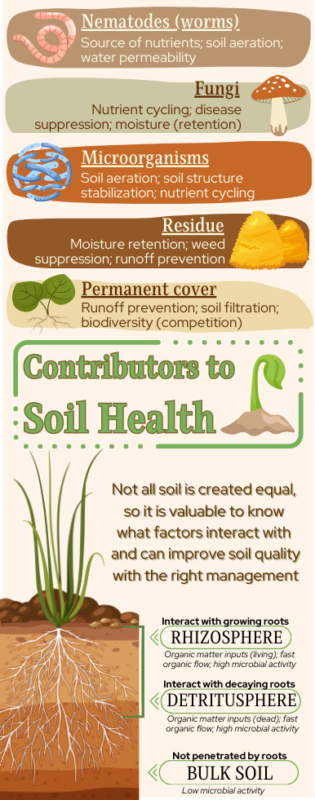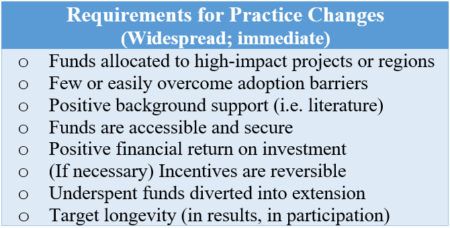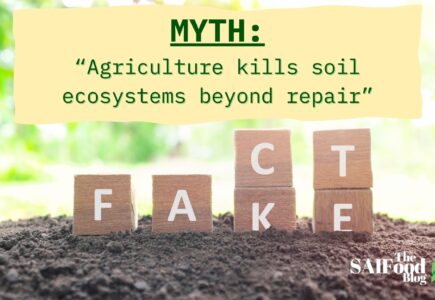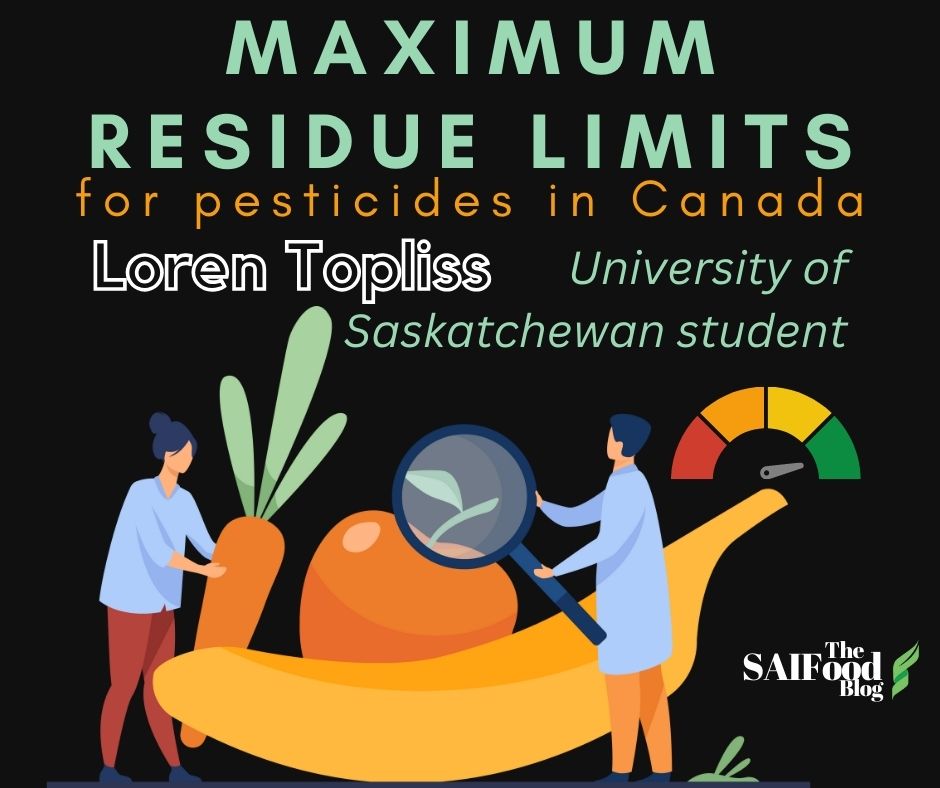Agriculture Myth Busting
Agriculture needs soil. Not dirt, soil. The difference between dirt and soil should be on either end of the land spectrum but, due to human actions (agriculture included), soil can begin looking dirt-like. The physical use of tilling, potential crop monocultures, fertilizer reliance, and field pesticide residues are only a few threats that food production can have to the longevity of soil fertility. Beyond agriculture, expanding urbanization and infrastructure contribute to the declining quality of food-producing acres although, in Canada, reporting on those acres is insufficient for creating an accurate understanding of soils. Canadian food-producing soils are currently undergoing assessment for the first time since 1984, with the first full draft moving into review May 23, 2024. The previous lack of reporting has trended policy toward soil productivity solutions that may not provide the same benefits across soil quality variations (since the variations are unknown), and often leave agriculture to defend itself against degradation claims.

Despite efforts to reduce the rate at which soil is lost, approximately one-third of the 8% usable global agricultural land has already degraded (unable to support food production). This poses a significant challenge to the growing population necessitated to living in climate-sensitive sub-humid and arid zones. As a result, the media repeats there are “only 60 harvests left” without really understanding what this means, how to correct course, or even where this claim originated. The goal of this blog is to partially remedy the dead soil mystery by determining agriculture’s true role in hindering and improving soil productivity.
Top-Down

Sources: Caballero (2021); Sokol et al. (2022)
Growing food occurs in the top layer of the earth known as topsoil; when you hear mention of soil zones, it is the structural nature of topsoil that is being discussed, and therefore, the most effective practices given soil structure are variable. The amount of carbon stored, for example, is a delicate and easily-influenced feature of soil and therefore limits the longevity of production despite the lack of complete understanding. Healthy soil moves beyond only structure (Figure 1), additionally considering soil organic matter (living and previously living residues), microbial and nematode populations, water permeation, and soil chemistry to determine the productivity of that plot. The microbial component is particularly important as each teaspoon of healthy soil contains over one billion microbes and worms, with a decline in living microbes (a signal of lost soil health) increasing the amount of (decomposition) carbon released to the atmosphere. The same philosophy applies whether you’re working in a field or in a backyard garden bed: soil resiliency protects microbiome health and soil productivity.
This variability across soil zones and across farms also implies a spectrum of soil quality rather than a definitive productive-unproductive binary. A couple months ago, I spoke in length about how difficult it can be to find productive uses for underperforming marginal lands which offers up a deeper subset of land suitable for crop production. As a further example, surface residues can provide land protection and input organic carbon, however, their benefits are also climatically dependent and removing too many from the field can increase the risk of decomposition and carbon loss. Similarly, the presence of dead (residue) materials can provide surface area that better captures and utilises rainfall, but when present in excess, productivity is hindered. This further accentuates the necessity of program adaptation, especially if production can be effectively tailored to limit physical disturbance, although it is clear Canada still has a long way to go.
Regenerate, Recover, Rejuvenate
When thinking about threats to soil, two frequently cited causes for lost topsoil are evolving climate conditions and the intensive nature of agriculture. The number of yearly rainfall events and acres in permanent cover are both on the decline, leading to serious implications for water retention and soil erosion, respectively. In the case of drought conditions, in which Canada has unhappily participated especially in recent years, policy has a tendency to take a first-world approach. To clarify, hot and dry conditions with infrequent precipitation risk, as a worst-case scenario, desertification. Syria and Libya are prime examples of, after centuries of land degradation, losing the battle against productivity. This is not to say either country is unproductive, it is merely a comment on how both countries have had to switch their thinking from a traditionally Western viewpoint of agriculture that prioritized wheat to one more accommodating of regional ecology and below-ground opportunities. While a multitude of options exists to create soil resiliency, Canadian policy has prioritised the historical ecological-based approach of regenerative agriculture.
Regenerative methods or conservation methods, which are more aware of the finite nature of ecology and attempt to add foundation to the system in combination with removing the product than conventional practices, differ from organic for a couple of main reasons. First, organic production is focused on what is being used as inputs and has nothing to do with the quantity; regenerative agriculture (indirectly) builds the natural resiliency of the system such that input reliance is reduced. Providing permanent cover is a regenerative practice because it protects soil quality and facilitates carbon storage; depending on which species are used for cover, one may be able to reduce fertilizer reliance, as well. Secondly, because organic acres use different chemicals from conventional fields, organic yields are often lower than economically feasible, often requiring more land to be used for agriculture than is necessary in conservation fields. There is no single approach to improving farm organic matter or preventing negative effects, that is why there are so many different beneficial management practices and why they vary based on location. The best example of this is with Canadian adoption of zero-tillage.
Soil erosion, the breaking down of future yields and fertility as usable soil is physically removed from the site and one of the major concerns regarding dead soil, can also be combatted with regenerative methods. Zero-till is technically a regenerative practice since it can increase sequestration in agricultural soils compared to conventionally-tilled fields, which are more likely to impact soil organic matter quality, soil nutrient retention, chemical and/or fertilizer reliance, and carbon sequestration and water storing potentials. Currently, Saskatchewan is rated ‘very low risk’ of losing soil carbon since the widespread adoption of zero-tillage practices in the 1970s which has since become an industry norm. However, eastern provinces are still heavily reliant on tillage as their staple crops (i.e. corn, potatoes) rely on compaction to maintain soil carbon stocks. Thus the invention of the McCain Regenerative Agriculture Framework and similar programs from McDonald’s, which demonstrate the tangible benefits of regenerative agriculture in Canadian potato fields, and provide support for farmers wishing to transition. Conservation, in general, requires economic support, especially for widespread adoption and building soil quality which often takes decades.
Incentivising Soil Health
Climate mitigation is a combined effort in educating farmers as to what works best on their farms and supporting them through the uncertainty as they make a production change. While resources exist that help farmers explore their options (like those provided by Régénération Canada) they often lack the socioeconomic support necessary for widespread adoption (Figure 2), igniting loud calls for policy coordination so farmers understand true program feasibility. Better soil protection policy in general appears to be a great option if options are appropriately unrestrictive, as it would combat the lack of progress from late technology and practice adopters and the evolving uncertainty of climate change.

Unsurprisingly, Canadian policy has evolved over the past century to prioritize low-disturbance agriculture as innovations have advanced, technological novelty has lost its awe, policy barriers torn down, and immediate survival evolved into long-term survival. At least, that is the thought process behind overarching frameworks; there are critics who would argue the underlying necessity to remain (globally) productive has pushed soil health out of policy, into the role of a voluntary benefit rather than necessity.
Options do exist to better the physical landscape on which we produce food, however, mechanisms must match market logistics and participant opinions. The discussion presented here could warrant a deeper discussion into agricultural carbon markets and the complications of additionality in (efficient) payment mechanisms while simultaneously recognising early sustainability adoption, but that topic really requires its own post. Similarly, there are rumblings that insurance incentives for best management practices could improve widespread adoption since farmers would be covered less if certain assurances aren’t employed on-farm, but that option would likely be unpopular amongst farmers.
Concluding Remarks
Just as the policy itself matters, the ways in which policymakers and the media discuss soil health properties also influence farmer adoption. Research that our team has done on prairie production practices in the Crop Rotation and Forage Rotation surveys has shown that farmers encourage carbon offsets in agriculture such that Saskatchewan soils are a sink, but overinflating the progress of farmers, like the ‘60 harvests’ claim or provincial government’s bolstered claims that Saskatchewan agriculture is net-zero, risks complacency since there is seemingly nowhere to improve. On the other hand, headlines that exaggerate the direness of agricultural soils without recognising positive contributions are likely to breed apathy, since there are no actions farmers can take to get ahead of soil degradation. Declining soil health is real in Canadian agriculture, but options to counter the rate of soil loss exist and can make on-farm progress, if farmers are adequately informed of available and productive options for their farm, and support mechanisms sufficiently support adoption.




